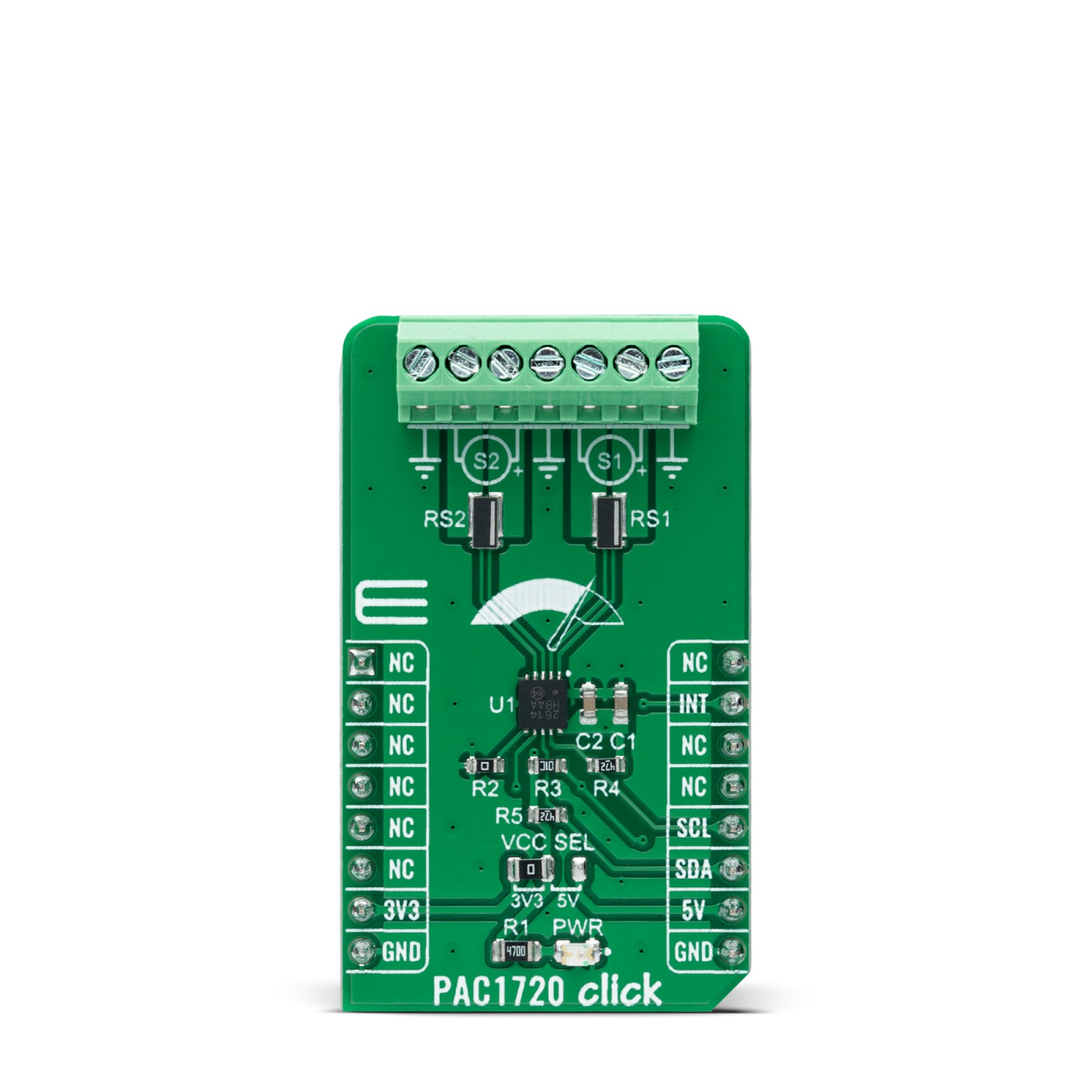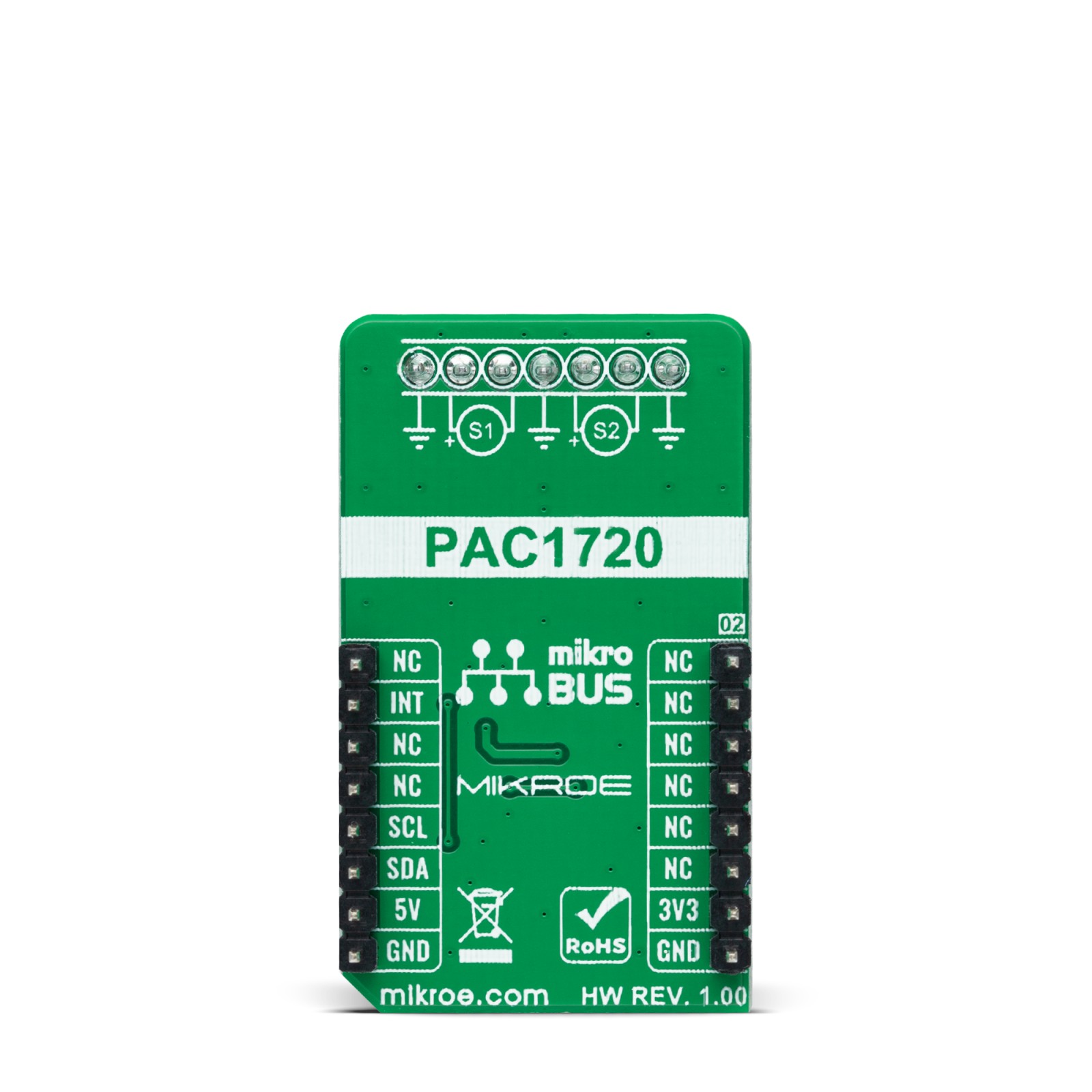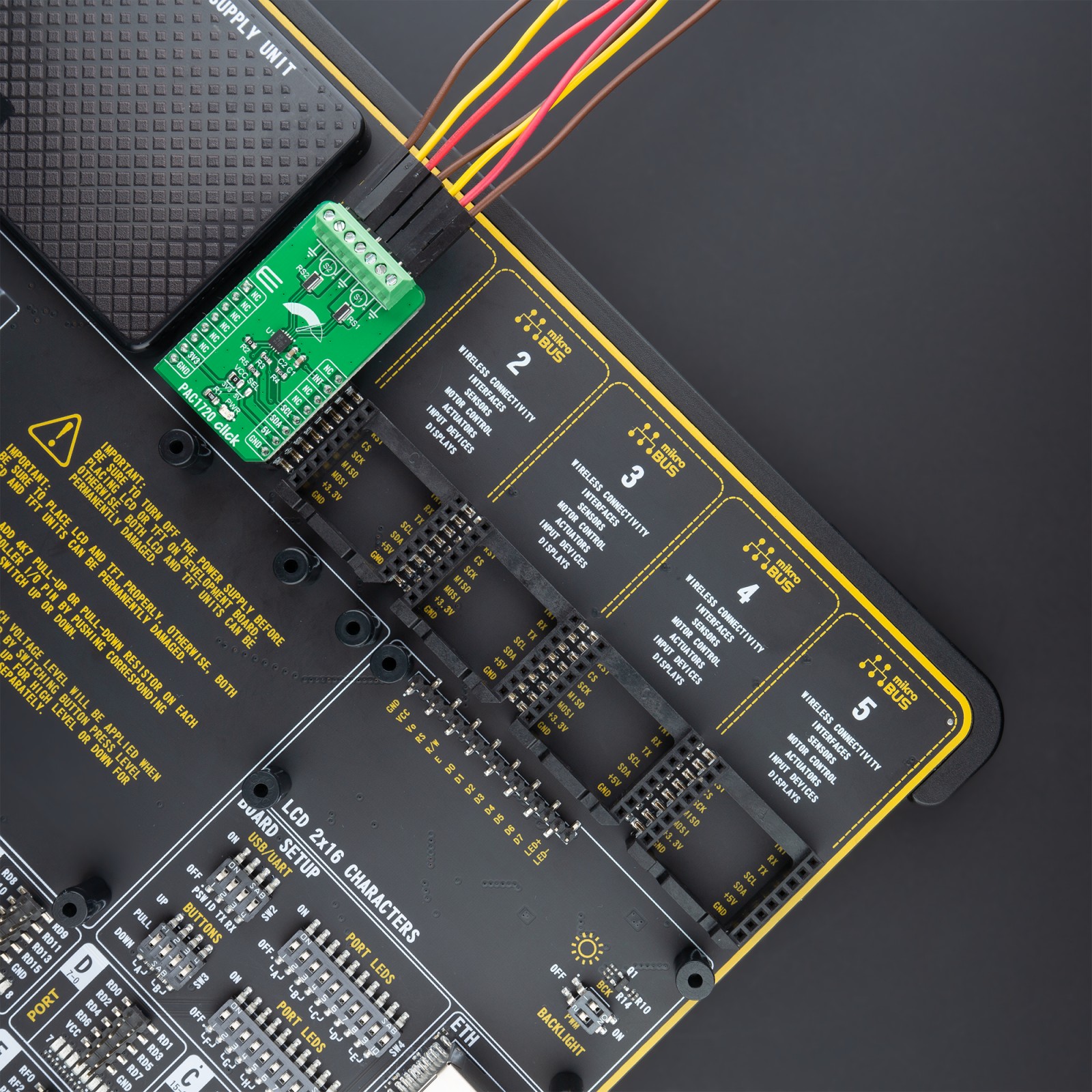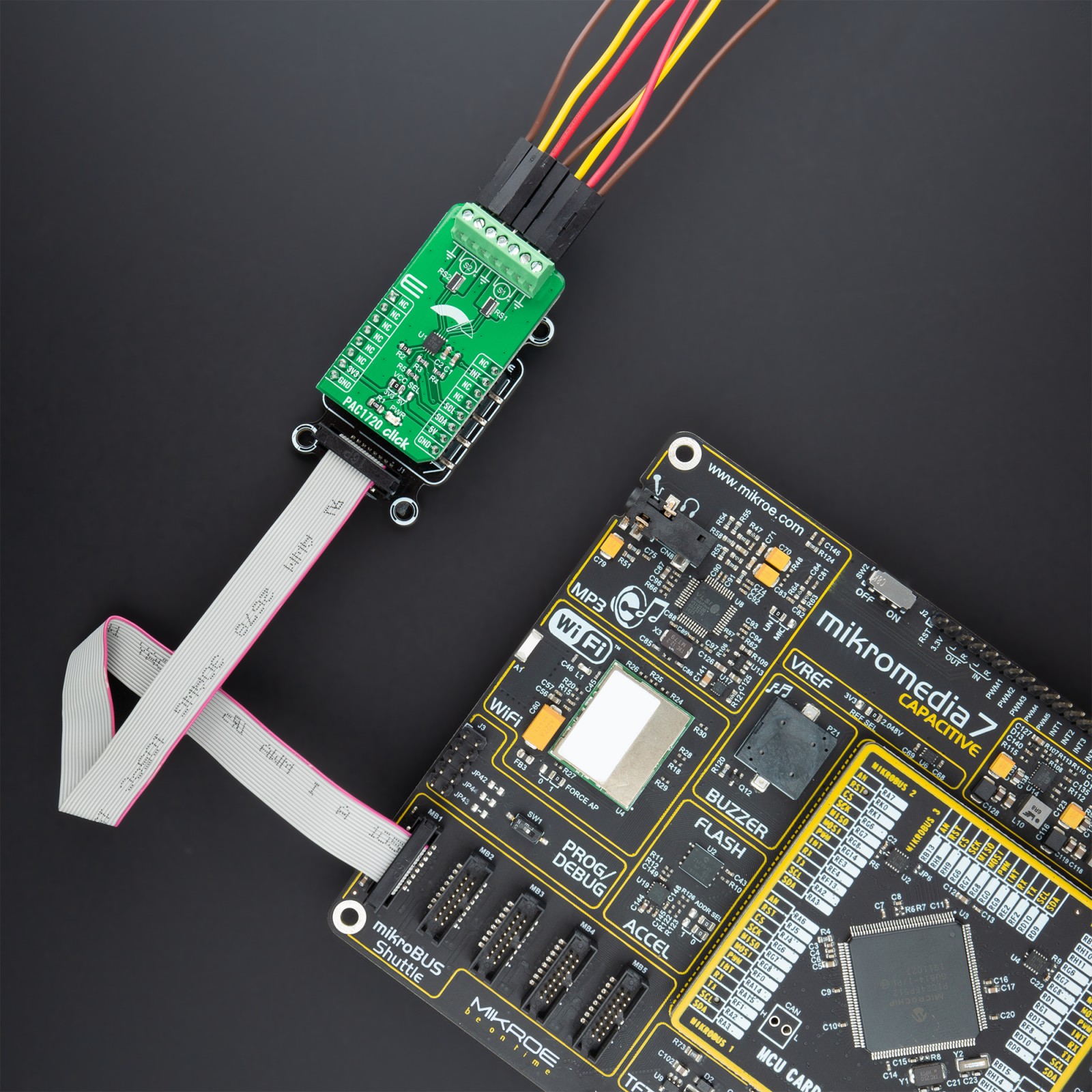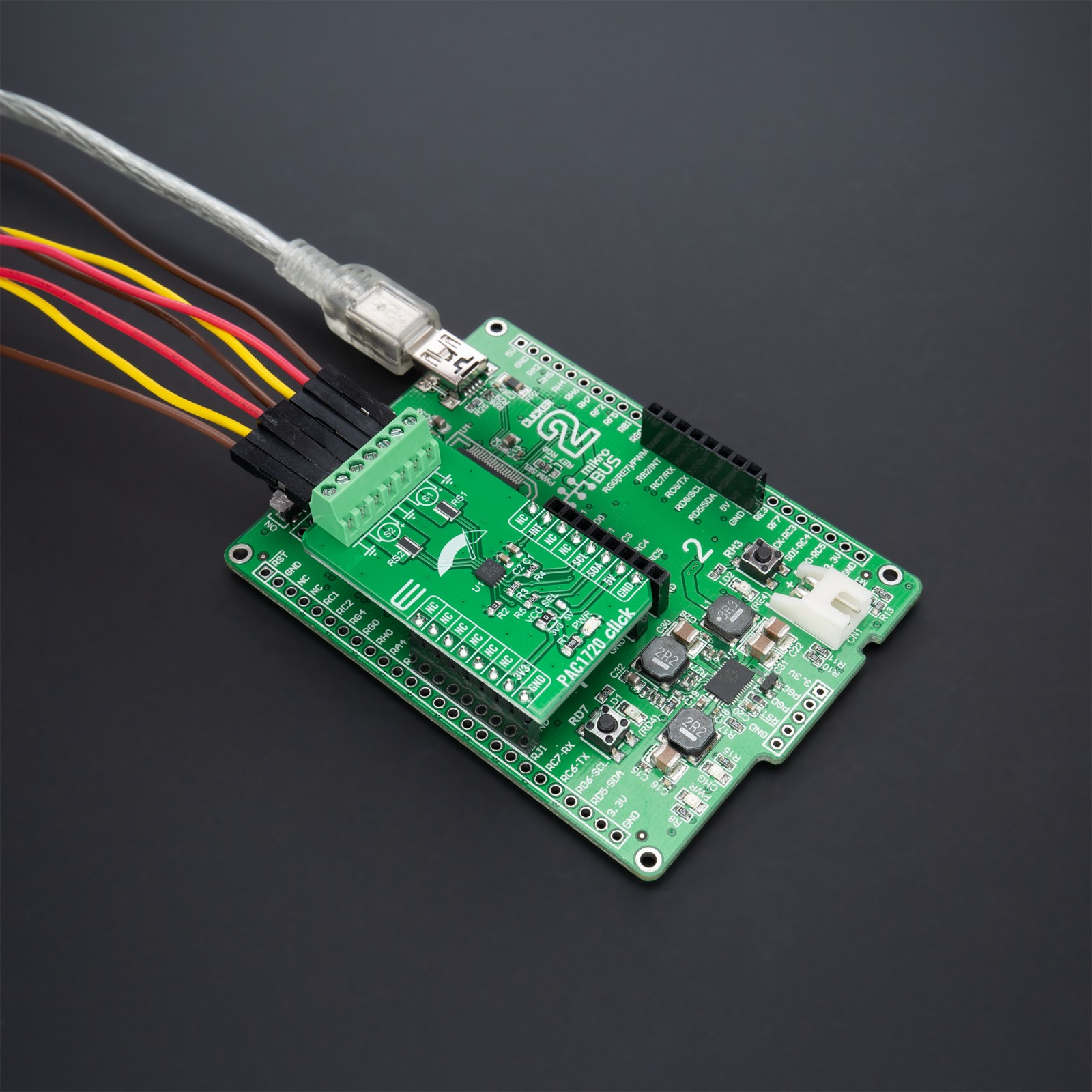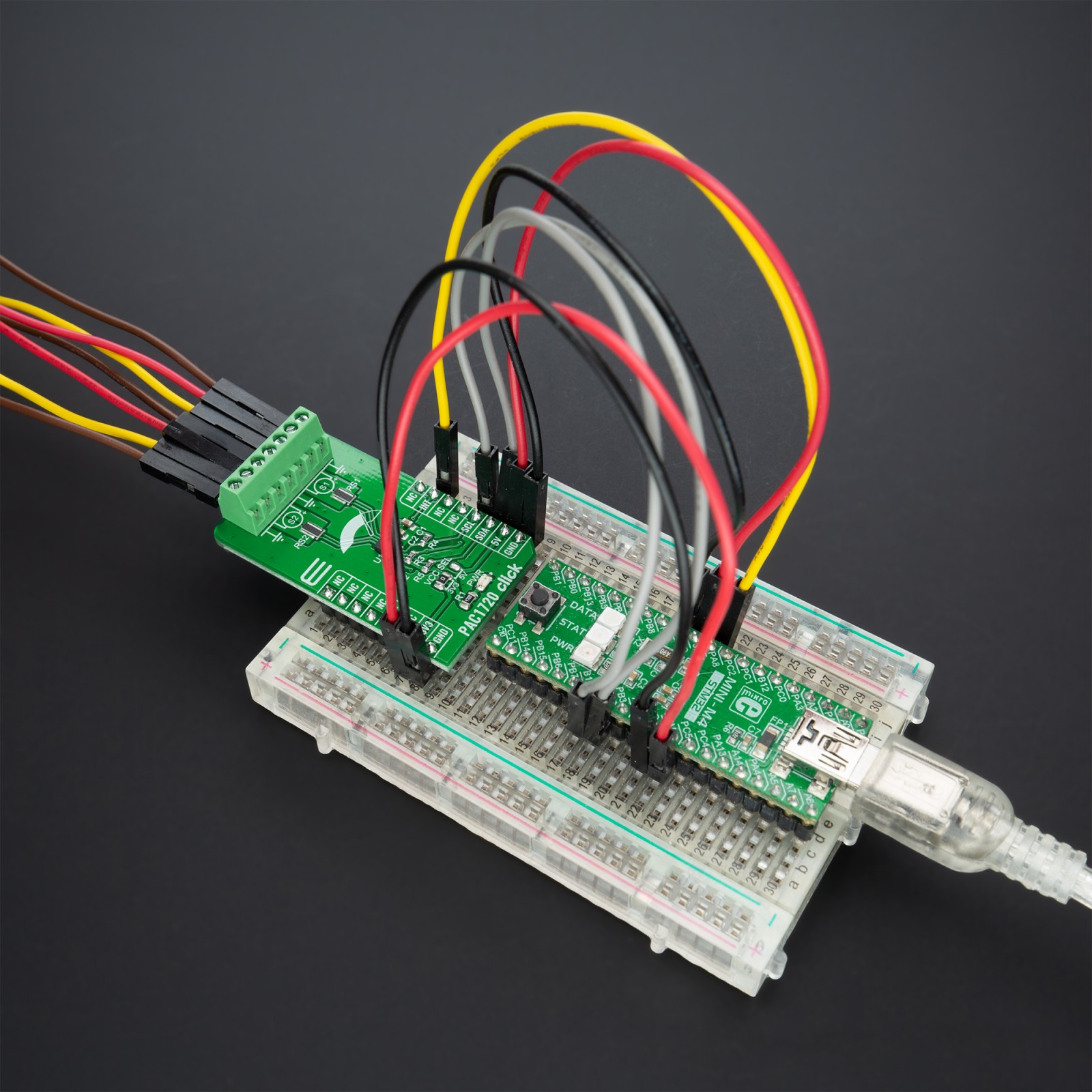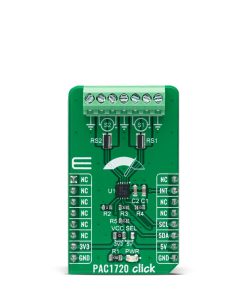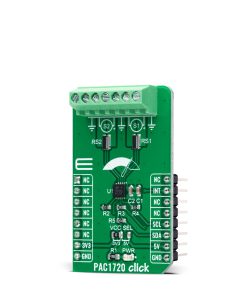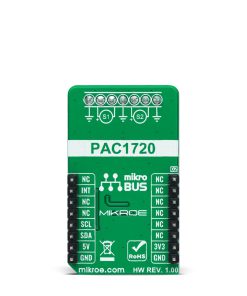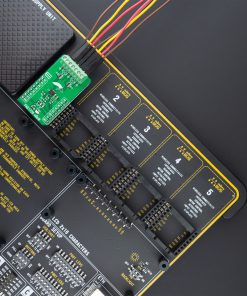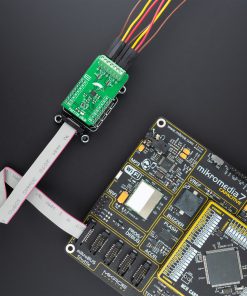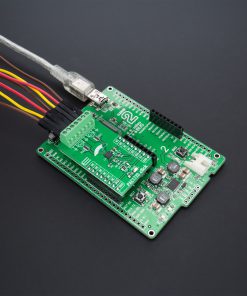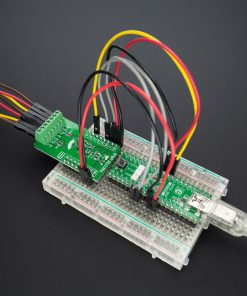PAC1720 Click
R335.00 ex. VAT
PAC1720 Click is a compact add-on board that contains an energy monitoring solution. This board features the PAC1720, an I2C configurable dual high-side bidirectional current sensing monitor with precision voltage measurement capabilities from Microchip Technology. The PAC1720 measures the voltage developed across external sense resistors to represent the high-side current of a battery or voltage regulator. They also measure the SENSE+ pin voltage and use these estimated values to present a proportional average power calculation. The current sensing feature includes fault protection, where during a fault condition, the ALERT pin can be asserted or masked. This Click board™ performs power calculations enabling energy monitoring in industrial and embedded applications, power management systems, and many more.
PAC1720 Click is supported by a mikroSDK compliant library, which includes functions that simplify software development. This Click board™ comes as a fully tested product, ready to be used on a system equipped with the mikroBUS™ socket.
Stock: Lead-time applicable.
| 5+ | R318.25 |
| 10+ | R301.50 |
| 15+ | R284.75 |
| 20+ | R274.03 |

